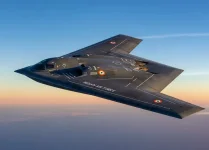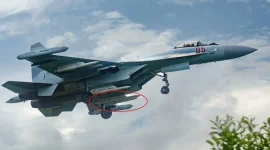- Views: 2K
- Replies: 7
India has implemented advanced electronic warfare (EW) measures along its border with Pakistan by deploying high-frequency jamming systems, according to reports circulating on social media platform X dated April 29, 2025.
These systems, positioned near the Line of Control (LoC) in Jammu and Kashmir, are designed to interfere with Global Navigation Satellite System (GNSS) signals, including GPS, GLONASS, and BeiDou.
The objective is to diminish Pakistan's navigational accuracy, battlefield awareness, and the effectiveness of its precision-guided weaponry, marking a notable increase in electronic countermeasures amid heightened tensions between the two nations.
This deployment comes in the wake of several recent security challenges, including violations of a prior ceasefire agreement along the LoC, confrontations in the Kupwara sector, and a significant attack on April 29, 2025, referred to as the Pahalgam massacre, where 26 tourists were reportedly killed by The Resistance Front (TRF), believed to be linked to the Pakistan-based Lashkar-e-Taiba. Following these events, India announced its withdrawal from the 2021 LoC ceasefire agreement.
The current EW strategy directly targets Pakistan's military reliance on satellite navigation for critical operations, such as guiding drones, coordinating troop movements, and aiming precision munitions like the Babur missile system.
India possesses substantial electronic warfare capabilities, with estimates from the Centre for Land Warfare Studies (CLAWS) in 2024 suggesting over 50 specialized EW systems are operated by its armed forces.
Notable assets include the SPECTRA electronic warfare suite integrated into the Indian Air Force's Rafale fighter jets and the 'Shakti' EW system employed by the Indian Navy on modern warships like INS Surat, both capable of sophisticated GNSS jamming.
In response, Pakistan utilises its own EW assets, including systems procured from China, such as the DWL-002 passive radar and the Zarb Coastal EW System, alongside commercially available jammers. These are reportedly used to counter Indian operations, particularly drone surveillance along the LoC.
The use of GNSS jamming technology carries consequences beyond the military sphere. Essential civilian services, including commercial aviation, communication networks, and various everyday applications dependent on satellite navigation within the region, are likely to experience disruptions. This highlights the broader impact of the ongoing electronic conflict.
While India holds a technological advantage in conventional EW systems, Pakistan continues to employ asymmetric tactics, such as potentially using localized jamming to aid militant infiltration across the border, presenting an ongoing challenge to Indian defence strategies.



